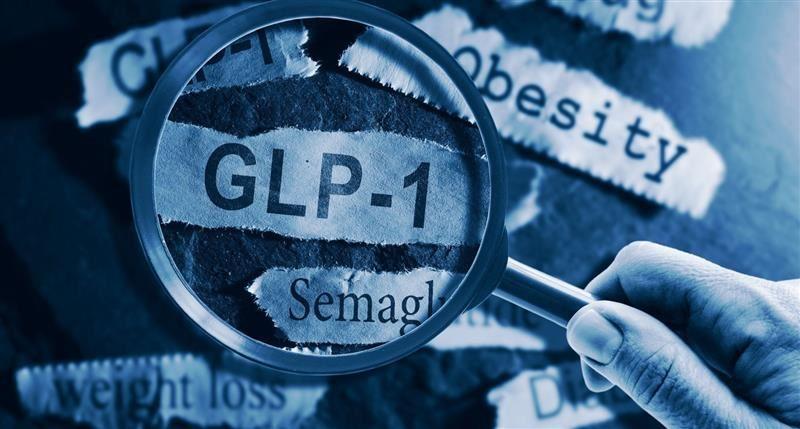GLP-1 Therapies Transforming Obesity Treatment in India
Published on 28 Feb, 2025

India's growing obesity burden has accelerated interest in effective treatment options. GLP-1 receptor agonists, initially developed for diabetes, are now proving highly effective in weight management by curbing appetite and promoting satiety. Market projections indicate a robust CAGR of 24.7% through 2034, signaling strong growth potential. While affordability challenges persist, the introduction of generics post-2026 and government-backed incentives could improve accessibility. With rising competition among Indian pharmaceutical companies and increasing awareness, GLP-1 therapies are poised to redefine obesity treatment, potentially becoming a key component of long-term weight management strategies in India.
Introduction
India is witnessing a rapid rise in obesity and type 2 diabetes, with around 11% of Indian adults projected to be obese by 2035, according to the World Obesity Federation Atlas. The National Family Health Survey (NFHS-4, 2015-16) reported that 20.7% of women and 18.6% of men in the 15-49 age group were overweight or obese, underscoring the urgent need for effective weight-loss solutions. Glucagon-like peptide-1 (GLP-1) receptor agonists, originally developed for diabetes management, have emerged as a promising treatment for obesity. These drugs mimic the incretin hormone GLP-1, enhancing insulin secretion, suppressing glucagon release, and slowing gastric emptying. This leads to reduced appetite and increased satiety, facilitating weight loss. Semaglutide and liraglutide, two leading GLP-1 drugs, demonstrated significant weight reduction in clinical trials, with semaglutide achieving up to 15% body weight loss over 68 weeks.
Market Landscape and Growth Potential
India’s GLP-1 receptor agonist market is valued at approximately USD 115 million as of 2024, with projections indicating significant growth driven by increased adoption in diabetes and obesity treatments. The market is expected to grow at a CAGR of 24.70% through 2034, positioning India as a key player in the GLP-1 segment within Asia.
Currently, GLP-1 prescriptions are used for diabetes management due to its high prevalence. However, with increasing clinical evidence supporting their efficacy in weight loss, demand for these drugs in obesity treatment is increasing. As awareness and affordability improve, their adoption in obesity management is expected to grow significantly.
The GLP-1 market for obesity is emerging as a significant driver of expansion within the broad GLP-1 segment. India’s anti-obesity drug market, valued at USD 3.81 billion in 2023, is forecasted to reach USD 14.48 billion by 2033. Given the shift towards pharmaceutical intervention in obesity management, GLP-1 therapies are expected to account for a substantial share of this growth.
Several pharmaceutical companies are actively working on GLP-1 receptor agonists in India. Novo Nordisk currently dominates the market with semaglutide (Rybelsus), but its patent on Wegovy and Ozempic expires in 2026, opening opportunities for generics. Eli Lilly plans to introduce Mounjaro (tirzepatide) in India by 2025, while Biocon has made regulatory filings for GLP-1 receptor agonists in various markets, including India, to expand its portfolio in the obesity and diabetes treatment segments. Cipla and Dr. Reddy’s Laboratories are working on off-patent GLP-1 opportunities, and Glenmark Pharmaceuticals launched a generic version of liraglutide in 2024. Sun Pharma is developing a novel GLP-1 molecule, set to enter Phase 2 trials soon.
Affordability, Accessibility, and the Gray Market
Affordability remains a significant barrier. In western markets, GLP-1 receptor agonists can cost over $1,000 per month. In India, even with anticipated price reductions from generic versions, affordability is a challenge.
A key factor in affordability is income distribution. In 2023, approximately 7.97 crore individuals filed income tax returns. However, only 0.5% of the population falls in the high-income bracket that can comfortably afford expensive GLP-1 therapies. For the vast majority, these drugs remain out of reach unless covered by insurance or government subsidy programs.
Despite the presence of legally available GLP-1 treatments, such as Novo Nordisk’s Rybelsus, which is available domestically for ₹4,300 for a 10-day supply, totaling around ₹12,900 per month, its limited distribution has led individuals to seek alternatives through informal channels. This includes importing from Europe, with a monthly supply costing around $1,200 (₹98,000) after shipping, customs, and storage fees. Online platforms list Wegovy at ₹9,500 for a four-week supply, but the authenticity is questionable. This unregulated access raises safety concerns, as counterfeit or unapproved medications may pose serious health risks.
Government Support and Policy Initiatives
Recognizing the need for accessible obesity treatments, India plans to offer incentives under the Production Linked Incentive (PLI) scheme to promote the local manufacturing of GLP-1 drugs in 2026. This initiative aims to scale up domestic production, reduce reliance on imports, and lower costs, making these drugs accessible to a broad population.
Future Outlook
India’s pharmaceutical industry is set to make GLP-1 receptor agonists more affordable, with domestic manufacturers introducing generic versions that could significantly reduce costs. Biocon’s generic liraglutide is expected to be competitively priced, expanding access.
The expiration of Novo Nordisk’s patent in 2026 and increased competition from Indian pharmaceutical players will lower prices. However, market success hinges on regulatory approvals, strategic pricing, and government-backed affordability initiatives. Raising awareness about obesity and promoting healthy lifestyles will further support pharmacological interventions.
GLP-1 receptor agonists have the potential to revolutionize obesity management in India. While affordability remains a challenge, government initiatives, domestic manufacturing, and increased awareness are expected to expand accessibility. With the right policies and pricing strategies, these treatments could become a cornerstone in combating obesity over the next decade.
